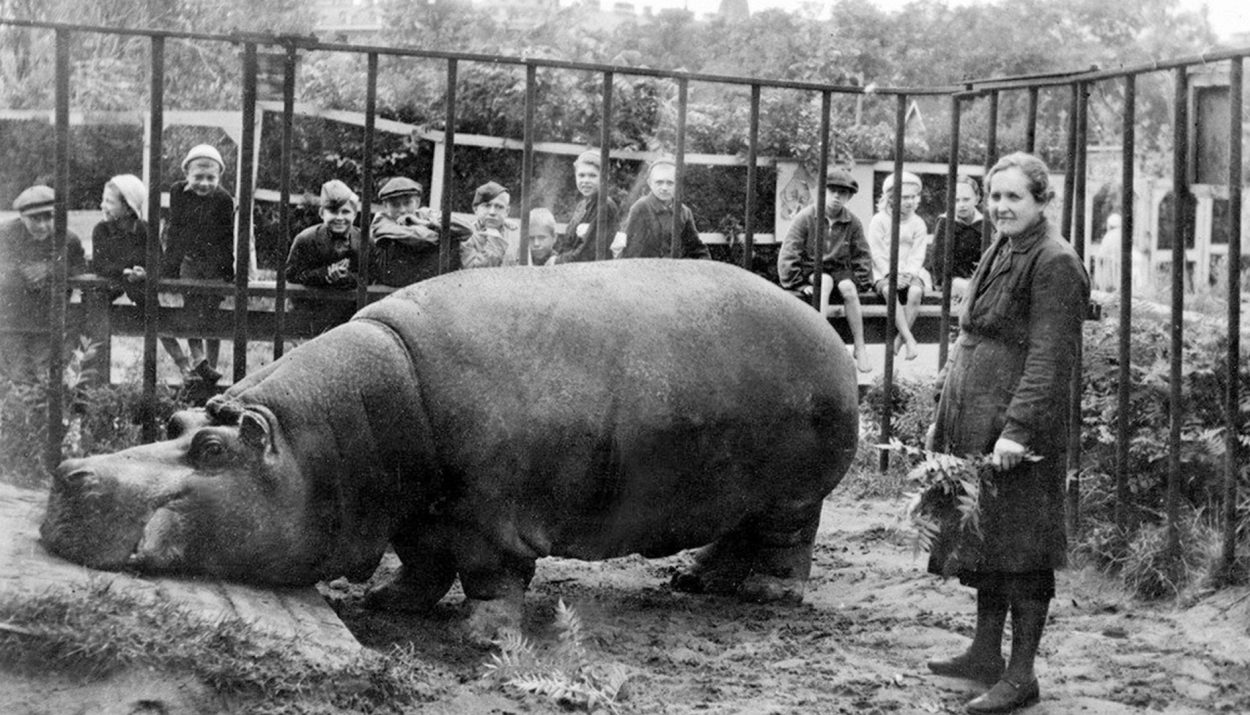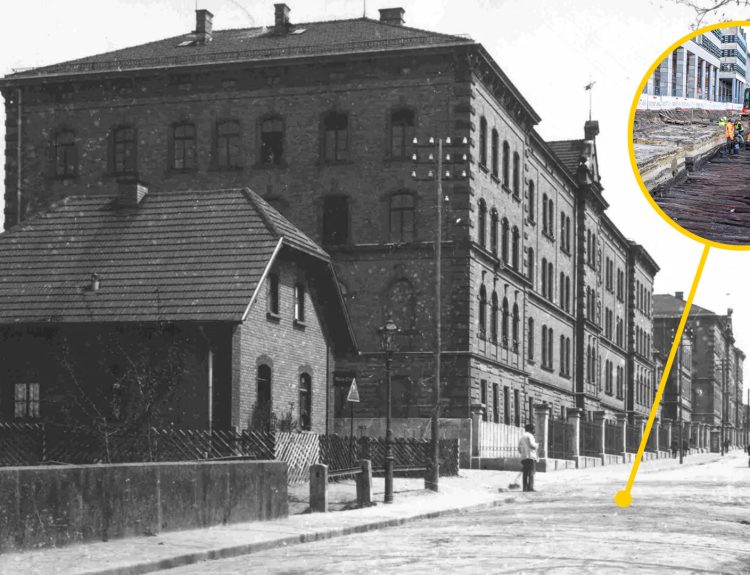From the horrors of the Holocaust to the atomic bombs dropped on Hiroshima and Nagasaki, World War II had more than its fair share of wartime atrocities. That’s what makes stories of courage, dedication, and altruism … especially ones with a happy ending … all the more heartwarming. Throw in some animals and we have all the making of a touching and inspirational tale.
The story of Belle, the war hippo of the Leningrad Zoo, is just this kind of story. No, this isn’t the plot of a Disney movie, although the hippo shares her name with a beloved Disney character. And the story isn’t as much about Belle the hippo as it is about her human caregiver and the people of the besieged Leningrad who demonstrated humanity in the most endearing way during a time of chaos and conflict. Here is Belle’s story.
The Siege of Leningrad
During World War II, German troops planned to force the Soviets to surrender by surrounding the city of Leningrad, now St. Petersburg, and putting the squeeze on the people of the city. The citizens faced food shortages. The water was cut off. Disease was rampant. And when winter set in, the temperatures plummeted.
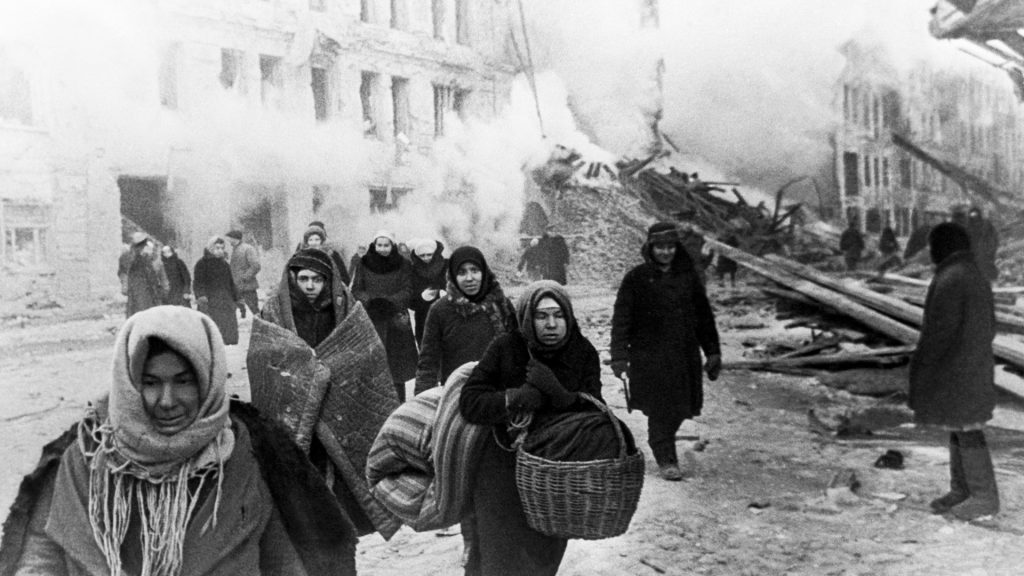
The Siege of Leningrad lasted for more that 870 days … one of the longest sieges in history. During the siege, an estimated one million people died from starvation, disease, and the bombardments, yet Leningrad’s citizens demonstrated tremendous courage and resilience.
The Leningrad Zoo Was Founded by an Ambitious Dutch Immigrant
In the 1870s, an immigrant from Holland named Sophia Gebhardt was selling waffles from a food cart in Leningrad. Charismatic and gregarious, Sophia caught the attention of the Russian nobility and amassed a small fortune. She opened a puppet show and a wax museum. But Sophia had bigger plans.
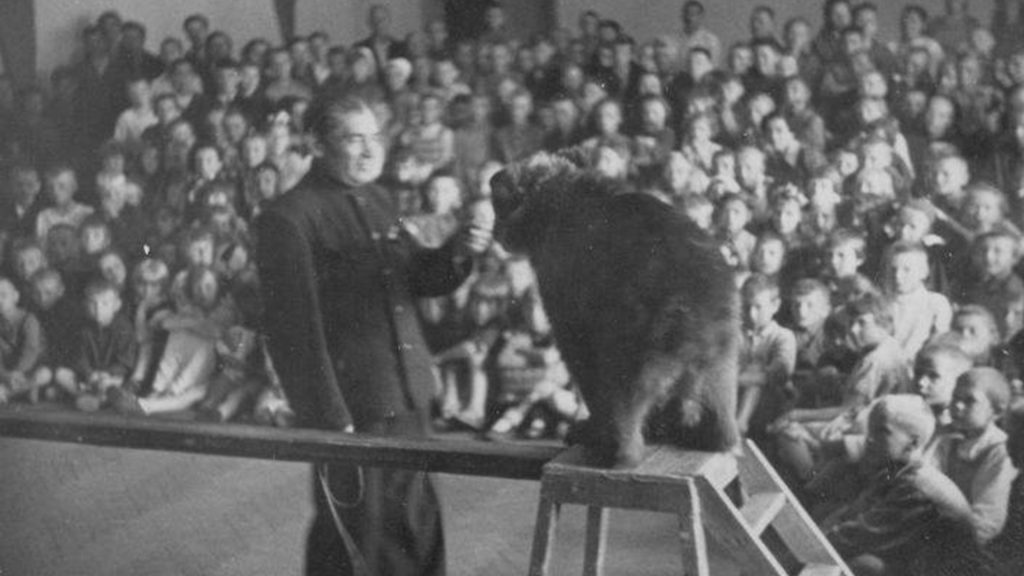
A lifelong animal lover, Sophia’s next big idea came after she married Julius Gebhardt, a fellow Dutch immigrant and zoologist. Together, they convinced the Tsar to lease a plot of land for a zoo. The couple collected a variety of exotic animals to the delight of the people of Leningrad.
Making the Zoo a Leningrad Icon
After Julius Gebhardt died in 1871, Sophia’s zoo was in serious financial trouble. She pulled it out of bankruptcy by marrying a prominent German businessman, Ernst Rost. With his money and connections, she added a restaurant, games, carnival attractions, and a music stage.

Revenue from these attractions, along with sponsorships from wealthy patrons, allowed the zoo to grow and expand. More exotic animals were added to the menagerie. The zoo had its own sewage system, running water, and generator-powered electricity.
The Zoo Suffered During the Blockage
When the Siege of Leningrad began in 1941, there were 160 animals living at the Leningrad Zoo. The zookeepers immediately evacuated 80 of the animals – polar bears, tigers, black panthers, and an adult rhinoceros – to a facility in Kazan. They had hoped to move more of the animals out, but they ran out of time.
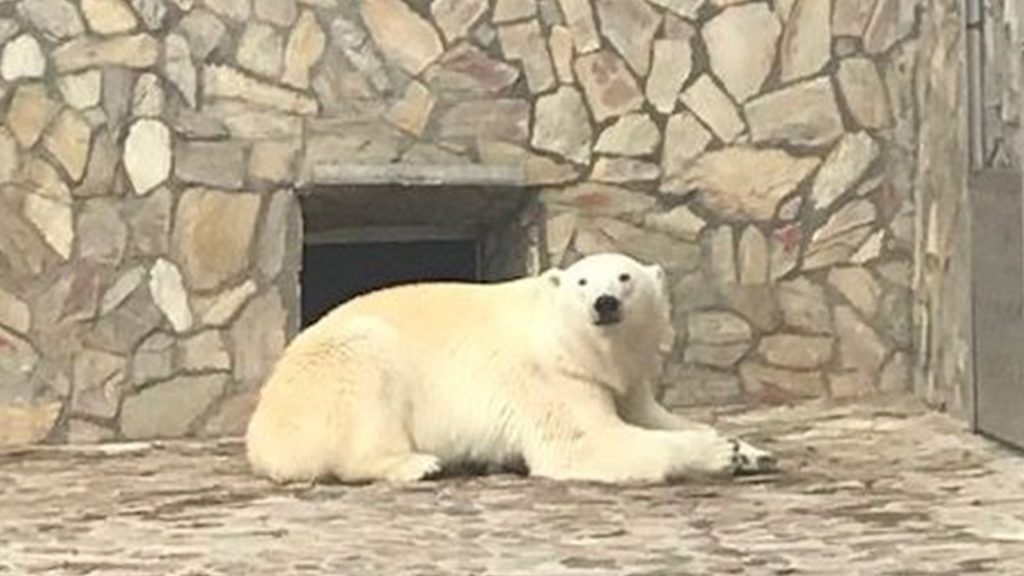
When the bombings started and some of the habitats were damaged, the zookeepers were forced to make a heartbreaking decision. Many of the large predators left at the zoo were shot and killed. The zookeepers did not want to risk the animals escaping from damaged cages and putting the people of Leningrad in danger.
Zoos During Wartime
According to reports, none of the animals at the Leningrad Zoo were killed during the actual siege. That makes the zoo a rarity. There are numerous accounts of zoos around the world euthanizing the animals in their collection to prevent the animals from suffering and from escaping into residential areas.
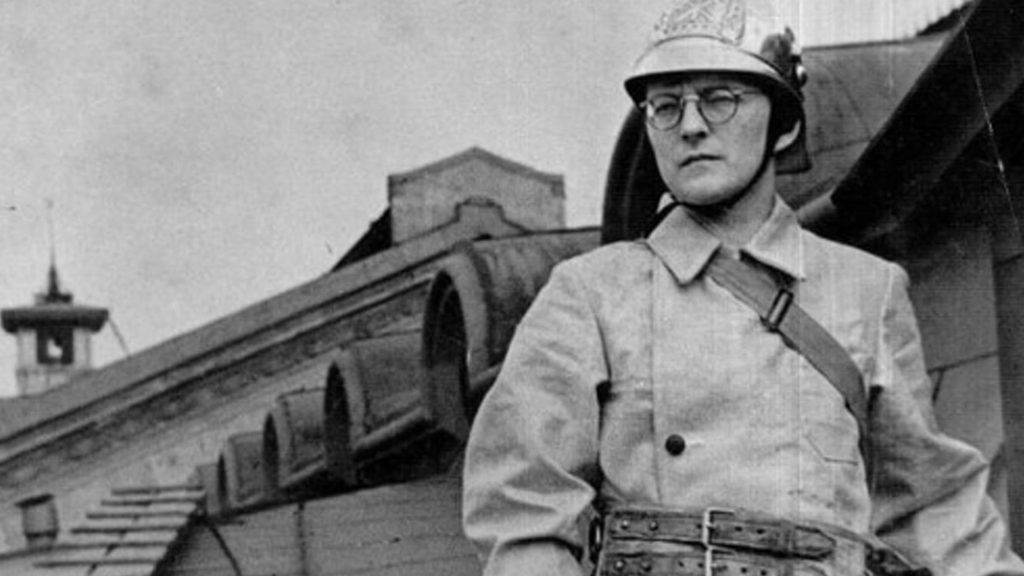
During the first World War, both the London Zoo and the Antwerp Zoo killed bears, big cats, and poisonous snakes. In World War II, animals at Tokyo’s Ueno Zoo, including elephants, bison, and leopards, were killed. Even in the U.S., a zookeeper in Iowa killed many of the predatory animals, like wolves and alligators, because he was concerned about food they ate.
An Unnecessary Expense
During wartime, when food and other supplies were running low, most municipalities considered zoos to be an unnecessary expense. Instead of allowing the exotic animals to consume large quantities of food that would be fed to humans, zoo animals were often slaughtered for food.

When the Berlin Zoo was bombed by the Royal Air Force, for instance, numerous animals escaped. The local authorities killed the escaped elephants and giraffe and sent the meat to area soup kitchens.
Caring for the Remaining Animals
The remaining animals at the Leningrad Zoo when the siege began included Betty the elephant, Belle the hippopotamus (also called Beauty), a dancing bear, a tiger, two donkeys, several monkeys, some foxes, several ostriches, a large black vulture, a small herd of deer, and bison. In addition, there were several other small animals.
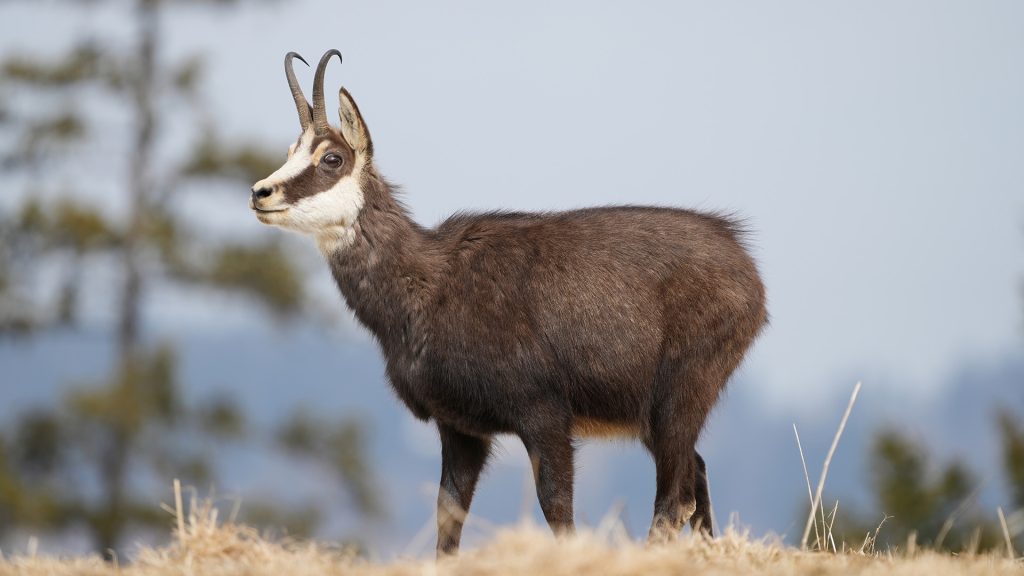
When the Germans bombed the city, which was often, the animals were frantic. Some cowered in fear while others ran around in fear. One well-shared story of the bombardments tells of a chamois goat. While the other animals were anxious and fearful during the bombing, the chamois climbed atop a hill and watched the missile strikes with his chin held high.
The Sad Fate of Betty the Elephant
Betty, an Asian elephant, had been a resident of the Leningrad Zoo since 1911. On September 8, the Germans once again launched explosives into Leningrad. When the warning sirens sounded, Betty the elephant scurried into her enclosure. But one of the bombs blew up just outside her housing. One of the zoo workers died instantly.
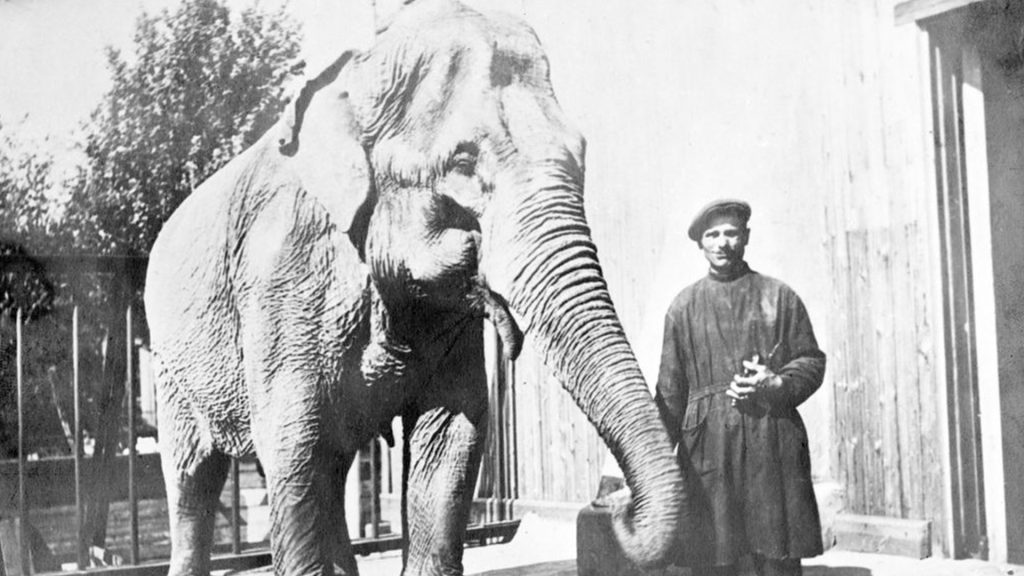
Betty’s enclosure collapsed on top of her. She was mortally wounded, trapped under the ruble, and crying in pain. About 15 minutes later, as the zoo workers tried to free her, she succumbed to her injuries. Betty the elephant, along with several other animals who were killed at the zoo, were buried on the zoo grounds.
The Zoo Staff Faced Challenges
The German bombing cut off the water to the Leningrad Zoo. The sewage system was also destroyed. The generator was damaged, so the zoo had no electricity. As the siege wore on, the zookeepers ran out of food for the animals.

City officials included the zoo animals in the food rations … but it was primarily vegetables and hay. This helped the animals that are herbivores, but the zookeepers had more difficulty feeding the carnivores.
Tricking the Carnivores
The zookeepers learned that they could trick some of the animals, like the vulture and the foxes, into eating vegetables by dripping blood or bone broth on the vegetables. The tigers, however, were not convinced, even when faced with starvation.
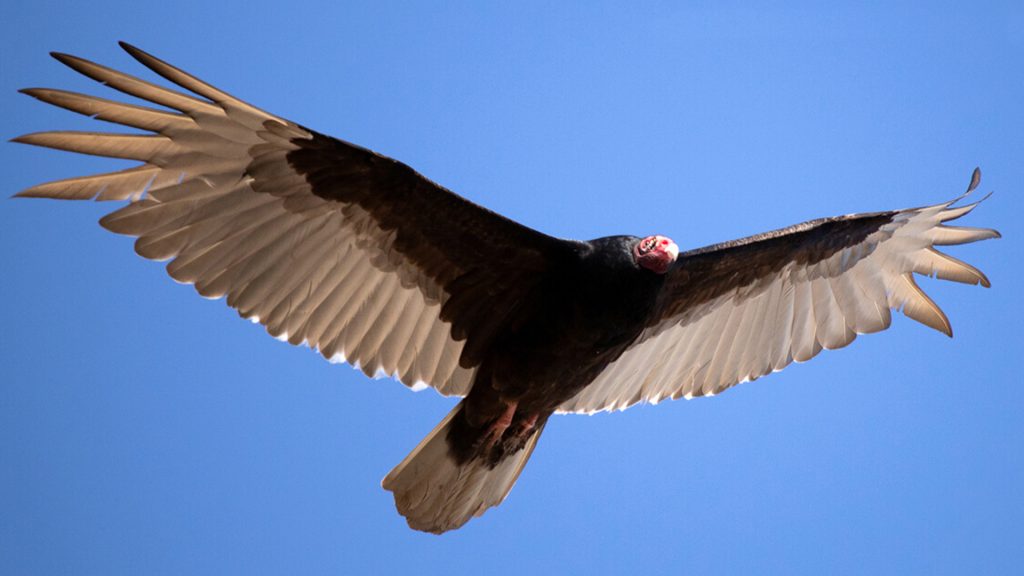
The creative zookeepers collected the skins of rabbits that Leningrad residents trapped for food. By sewing hay and vegetables inside the rabbit hides, the larger carnivores avoided starvation.
Help from the People of Leningrad
The zoo animals during the Siege of Leningrad depended completely on the zookeepers, but as the siege wore on, the zookeepers needed help. Even though they were facing food shortages themselves, the people of Leningrad stepped up to help.

When horses or dogs were killed by missile attacks, the corpses were donated to the zoo to help feed the meat-eating animals. In addition, people gathered acorns, berries, dried grass, and other foliage for Belle the hippo and the other zoo animals. Turnip tops, potato peels, spoiled cabbage, and other garden waste were also donated to the beloved animals.
Belle the Hippo
Belle, whose name means “Beauty,” was a pygmy hippopotamus who arrived at the Leningrad Zoo in 1911, the same year that Betty the elephant joined the zoo. Hippos are rather high maintenance to keep in captivity.
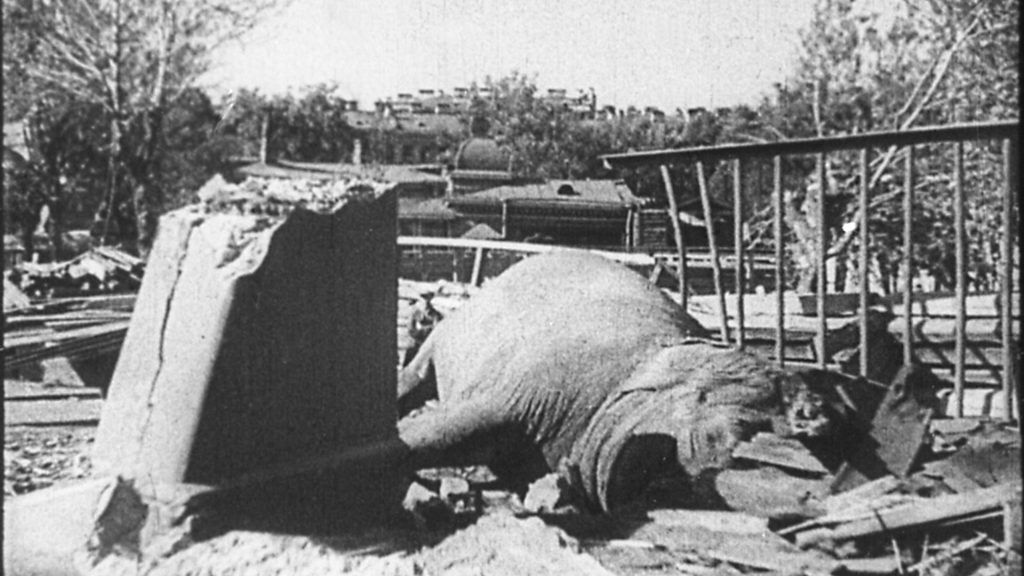
Once they reach adulthood, they need about 90 pounds of food per day to sustain them. In addition, hippos need a lot of water. They dehydrate quite easily if their skin is not kept moist. That’s why hippo habitats all have pools.
A Remarkable and Caring Zookeeper
Yevdokia Dashina was one of the zookeepers at the Leningrad Zoo during the Siege of Leningrad. Among her tasks was caring for Belle the hippo. When the water was cut off at the zoo and Belle’s pool dried out, Dashina had to take creative measures to keep Belle alive. Every single day, Dashina trekked to the Neva River where she filled a 40-liter barrel with water. She then dragged the barrel back to the zoo.

Belle drank some of the water. The rest, Dashina used to keep Belle’s skin hydrated. Dashina gave Belle a sponge bath. In addition, Dashina rubbed Belle’s skin with oil to keep it moisturized and hydrated. It helped to protect her sensitive skin and sooth her anxiety over the near-constant bombardments.
Devoted to Their Jobs
Yevdokia Dashina and the other zookeepers at the Leningrad Zoo moved into the zoo to continue caring for the animals during the Siege of Leningrad. They faced hardships and food shortages themselves, yet they were devoted to the animals in their care.

In addition to tending to the animals, the zoo workers made repairs to cages and enclosures, cleared debris, and mended fences. When one of the baboons delivered a baby and the mother could not produce enough milk, the zookeepers picked up donated breast milk from a nearby maternity hospital every day and bottle fed the baby.
An Amazing Survival Rate
When the Siege of Leningrad was finally over, the people of Leningrad rejoiced that Belle the hippo and most of the other zoo animals had survived the terrible months. In fact, it was a source of pride for the city. When the siege ended, residents flocked to the zoo, finding peace among the animals.
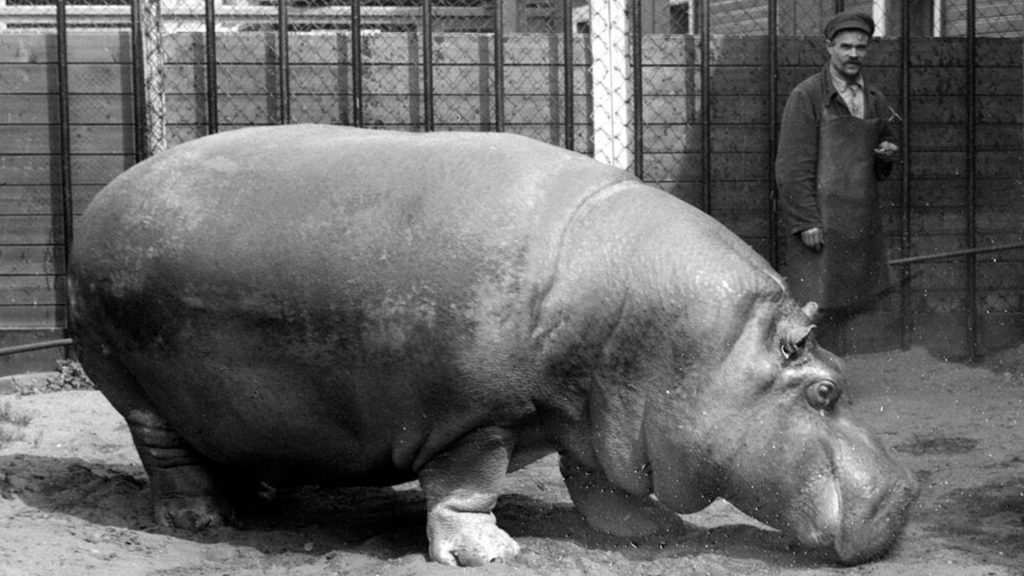
The dedication of Yevdokia Dashina and the other zookeepers became the stuff of legends. Their devotion to the animals demonstrated to the rest of the world that the people of Leningrad retained their compassion even during the darkest time in their history.

